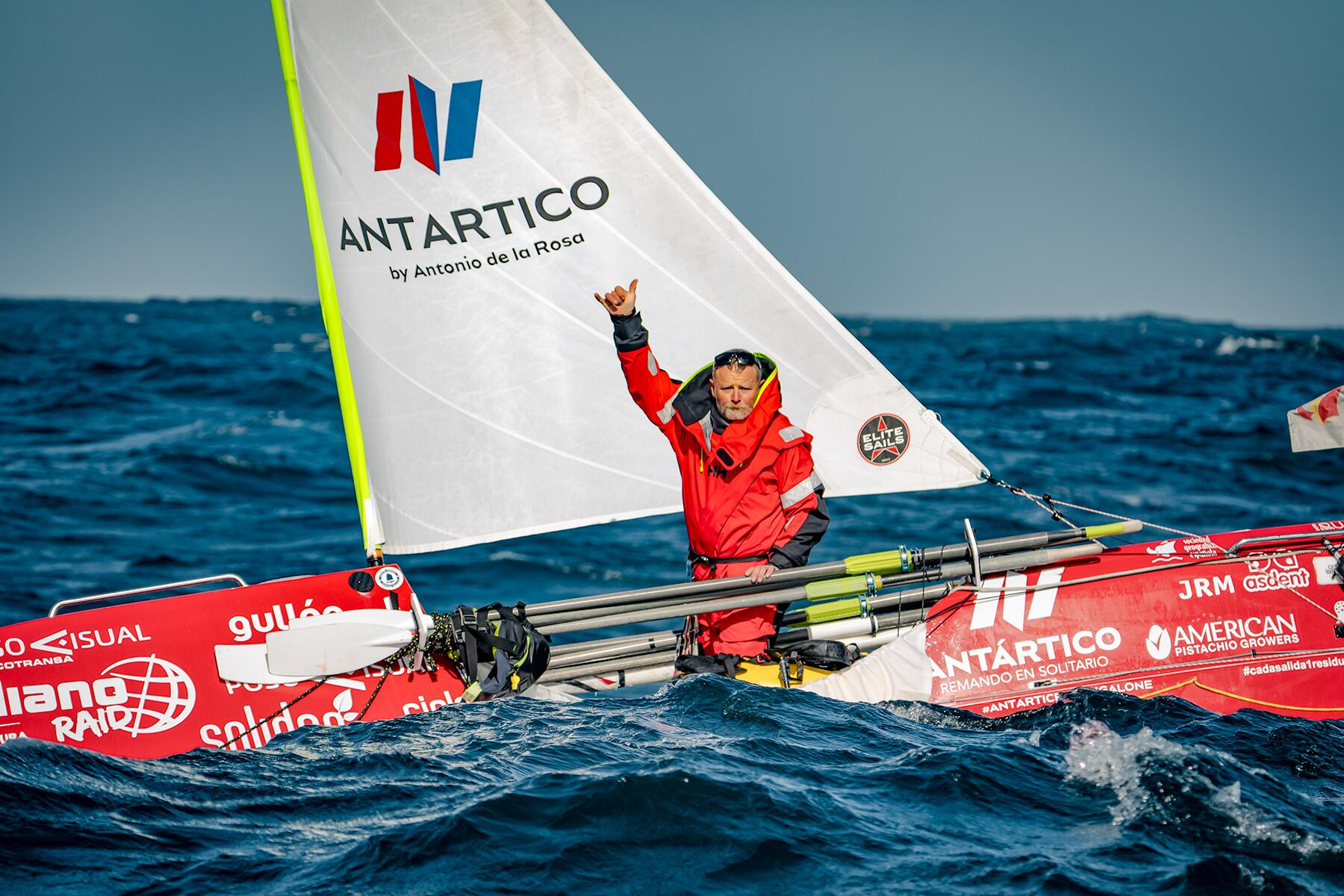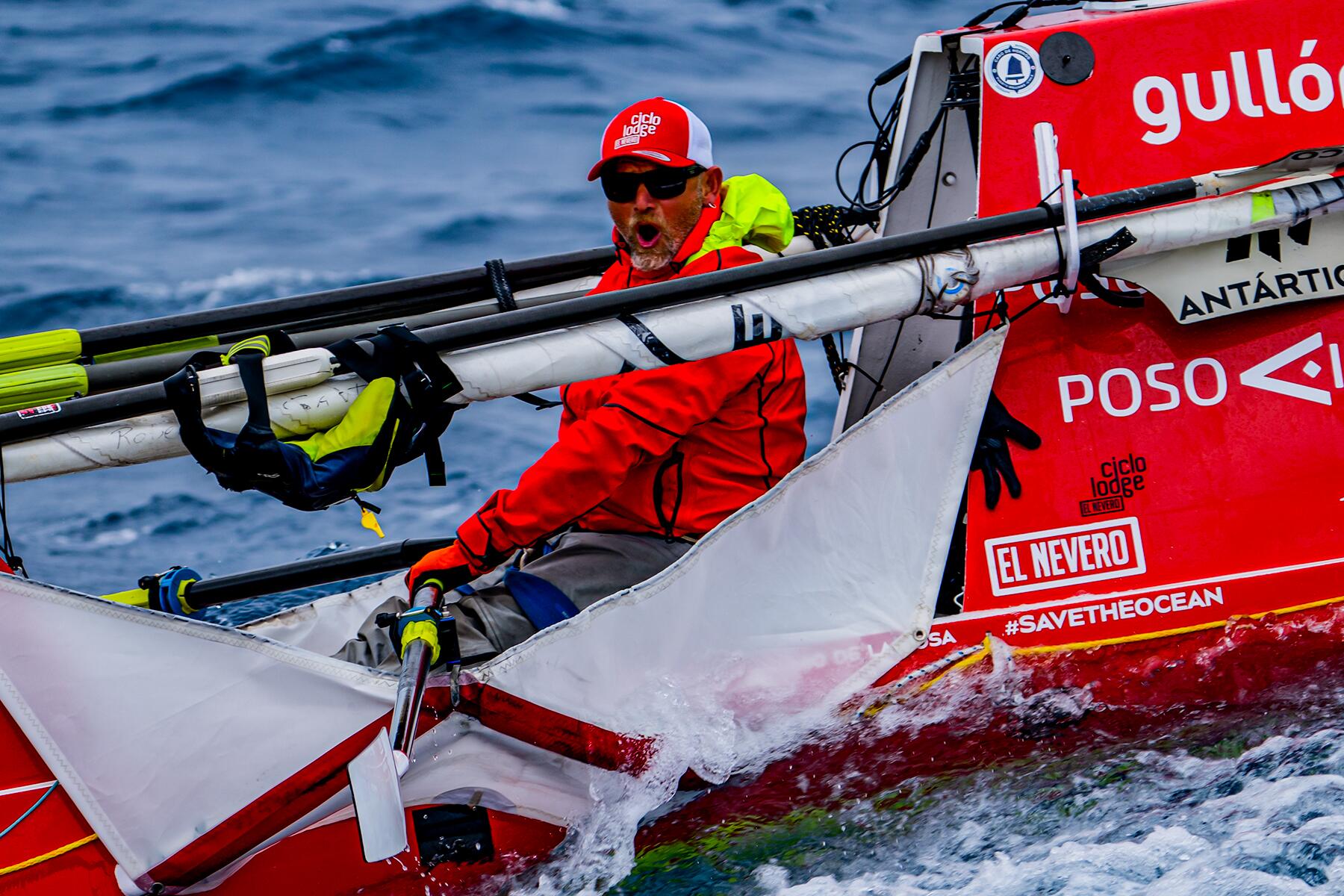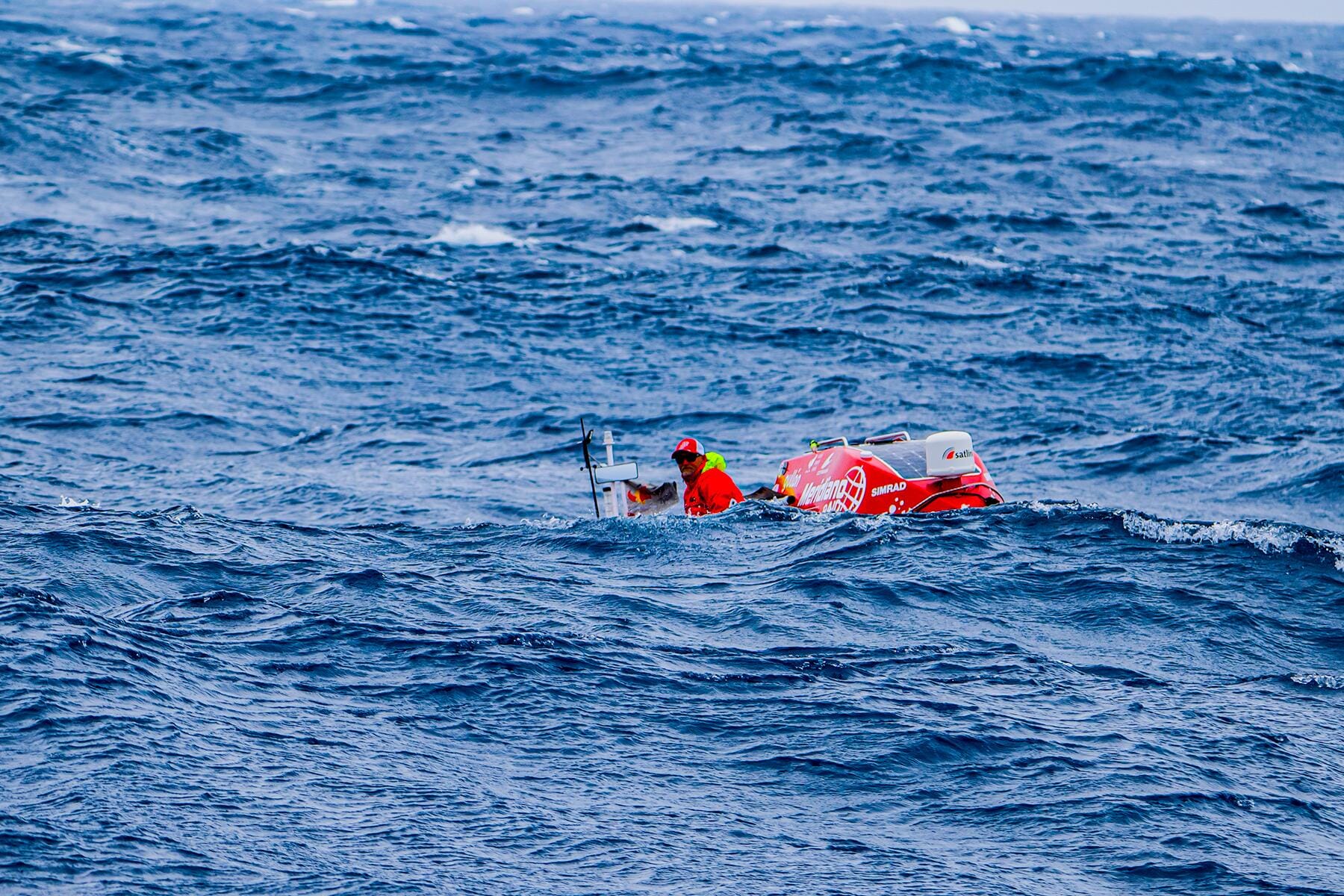Spanish adventurer Antonio de la Rosa spent years preparing for his Antarctic expedition, but even he didn’t foresee how much would go wrong.
For 26 days, Antonio de la Rosa fought hard against waves twice the size of his 23-foot boat, the Ocean Defender. The temperature hovered just above freezing, and winds gusted up to 75 mph. Some days he had to row for 20 hours just to keep from being blown backward. Yet, he claims to have enjoyed most of the experience.
De la Rosa set out from Cape Horn, the southernmost point of South America, on January 7, 2023, for a solo expedition rowing to Antarctica. Nobody had ever tried to row alone to Antarctica, and he was determined to be the first.
He headed south towards Elephant Island, one of a string of islands on the Palmer Archipelago stretching north and east from the Antarctic Peninsula. To reach that Antarctic Island, he needed to row 560 miles southeast of Cape Horn. The massive waves and bitter cold threatened his life throughout the voyage, but the Antarctic currents and winds were a bigger threat to the success of his expedition.
According to the Antarctic and Southern Ocean Coalition: “the Antarctic Circumpolar Current (ACC) [is] the longest, strongest, deepest-reaching current on earth.” The ACC swept de la Rosa’s tiny boat east of his course throughout the journey. The winds swirled around, sometimes blowing him southwards but just as often pushing him back north.
Recommended Fodor’s Video
He spent New Year’s in Puerto Williams on Chile’s Navarino Island, waiting for a window in the weather that would allow him to depart safely from Cape Horn. Sailors and navigators worldwide shudder when they consider the dangers of Cape Horn. The ACC is strong there, and miscalculating the current and winds could have left the Ocean Defender smashed on the rocks.
“He is risking his life,” said Quico Taronjí, a leading Spanish journalist and experienced sailor. “This expedition is absolutely crazy.”
All these dangers beg the question, why attempt rowing solo in those seas?
“Where you go is no longer the challenge. With enough money, you can go anywhere,” de la Rosa says. “The challenge now is how you get there.” Thousands of people go to Antarctica yearly, yet none have ever tried to row there alone.
De la Rosa has already tested his survival skills on many extreme adventures. In 2014, he was the first person to complete the Alaskan Iditarod dog sled race on cross-country skis, pulling his own sled. The 1,000-mile race can be won in as few as seven days, but it took de la Rosa 42 days and 21 hours. The same year, it took him 64 days to row 2,920 miles alone across the Atlantic from Senegal to French Guiana. In 2016, he spent 26 days paddle-boarding 454 miles around the Arctic. In 2019, he navigated over 2,920 miles of the Pacific alone on a stand-up paddle board from California to Hawai’i in 76 days.
“The comfort zone is so boring,” de la Rosa said when asked about his motivation for such extreme solo adventures.
De la Rosa enjoys solitude. He revels in testing himself against the elements and his own physical limits. To him, it seems only natural that his next endurance test would be rowing to Antarctica. Unfortunately, he didn’t make it.
From the second day of the expedition, things started to go wrong and just kept going wrong. The three days of calm that were predicted for his departure from Cape Horn barely lasted 12 hours. Only a week into the voyage, the autopilot controlling the rowboat’s rudder broke, leaving him to manually steer the boat as he rowed. On day 12, he was still 125 miles from Elephant Island, though winds and currents had pushed him so far east of his course that he found himself directly north of the island. Without a motor, there was no way to go directly south and reach his goal.

Disappointed but still determined, de la Rosa pointed the Ocean Defender northeast. If he couldn’t row to Antarctica, he decided he would row all the way to South Georgia Island, the last destination on his voyage.
South Georgia has been inhabited since 1904 when a Norwegian whaling station called Grytviken was established there. It closed in 1964 after whales had been hunted almost to the point of extinction. Today, the island is a British Overseas Territory, inhabited by a few scientists and “five million seals of four different species, and 65 million breeding birds of 30 different species,” according to the British Antarctic Survey.
The second part of the expedition was supposed to be a sailing voyage from Elephant Island to South Georgia. De la Rosa was inspired by Sir Ernest Shackleton’s rescue mission in the 26-foot wooden lifeboat James Caird. Shackleton sailed with five crew members in 1916 from Elephant Island to South Georgia to find help for the rest of his crew, who remained stranded on Elephant Island.
After only two days of rowing northeast towards South Georgia, de la Rosa was forced to raise the sail. He had rowed over 400 miles in 14 days, with Antarctic waves and wind constantly battering at his boat and the navigational technology he had on board. Humidity in the boat’s compartments and the impact of so many waves broke down his electronic systems, which finally compelled him to raise the sail. He needed to move faster to reach South Georgia before all his navigational systems failed.
The Ocean Defender had solar panels lashed to the top of the boat’s small cabin, which de la Rosa needed to produce at least 150 amps per day. The most important piece of survival equipment he relied on was a desalinator for potable water. He also had a GPS plotter, a VHF radio so other boats could locate him, and a Satlink system for communication. Between rowing, sleeping, and eating, he had very little time for his fans but still posted daily on Instagram and talked to his family in Spain.
The closer de la Rosa got to South Georgia, the more icebergs he saw. Before he began the trip, that had been his biggest worry. Though the Ocean Defender’s speed while rowing or sailing wasn’t fast enough to cause damage if he hit an iceberg, the violence of a wave smashing the boat against a wall of ice was a completely different story.
“The danger would be if a piece of that mass of ice fell on the boat,” de la Rosa posted on Instagram three weeks into the voyage when he started seeing more icebergs. “I’ll have to be vigilant from here to South Georgia.”
Considering all the dangers of an Antarctic expedition, the Chilean Navy required de la Rosa to hire a rescue boat before they would allow him to depart Cape Horn. Unfortunately, that turned out to be one of his biggest problems.
De la Rosa hired Captain Ezequiel Sundblad and his boat, the Ypake II, a 60-foot sloop. Sundblad’s job was to stay close enough to the Ocean Defender that de la Rosa could be rescued within 24 hours in case of emergency. He only stayed that close the first few days. At times, the Ypake II was so far away it could have taken four days to reach the Ocean Defender.
When the seas were rough, which was most of the time, de la Rosa wore a Helly Hansen ÆGIR Ocean dry suit. Theoretically, if a wave swept him out of the boat, he could survive up to 24 hours in that dry suit. To prevent that, he wore a climbing harness that tethered him to the Ocean Defender anytime he was outside the boat’s cabin. For most of the trip, de la Rosa knew he wouldn’t be rescued within 24 hours.
The other reason Sundblad was expected to stay close to the Ocean Defender was that his only passenger, Alfonso d’Ors of PosoVisual, was on board to capture footage of the voyage. D’Ors had been working with de la Rosa for four years on a documentary, and the Antarctic expedition was supposed to be the culmination of all that effort. During the 26 days between departing Cape Horn and de la Rosa’s arrival on South Georgia, d’Ors only saw the Ocean Defender seven times.
Despite everything that went wrong, de la Rosa considers the expedition successful. Perhaps the biggest accomplishment was his survival. De la Rosa navigated 1,479 miles of the most dangerous seas in the world without using any fossil fuels. He spent 26 days alone, then recorded his smile, laughter, and shouts of joy on a GoPro when he reached South Georgia.
Shackleton didn’t reach Antarctica on his fabled expedition either. He has gone down in history as an outstanding leader and survivalist. De la Rosa is still making history, but his Antarctic expedition will be remembered as one of the greatest survival tests of modern times.







